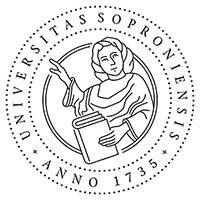The Importance of Enhancing Critical Thinking Skill Of Pre-Service Teachers
Abstract
The paper deals with the necessity of continuous work on the development of the critical thinking skill in higher education. More precisely, it aims to explain the context in which the need for teaching critical literacy to future teachers arises. The contemporary both professional and private challenges have been increased by the information and communication technology. Apart from being functionally literate teachers and students should improve the refined ability to read, write, research and communicate in a way that supports critical analysis, interpretation, processing and storing both print and non-print texts. In addition, the author discusses the possibilities of incorporating critical literacy in school curriculum, applying either implementation or teacher initiative, opting for the combination of the two (teacher competencies and governmental support). The initial teacher education must empower students not only to teach critical literacy to their own students, but also to keep developing their critical thinking skill.
References
Baumann, Z. (1993). Postmodern Ethics. Cambridge, MA: Basil Blackwell.
Bennett, S., Maton, K. and Kervin, L. (2008) The ‘digital natives’ debate: A critical review of the evidence. British Journal of Educational Technology. Vol. 39, No. 5, pp. 775–786. doi: https://doi.org/10.1111/j.1467-8535.2007.00793.x
Chun, C. (2009). Critical Literacies and Graphic Novels for English-Language Learners. Journal of Adolescent & Adult Literacy, Vol. 53, No. 2, pp. 144–153. doi: https://doi.org/10.1598/JAAL.53.2.5
Cradler, J. (1999). Implementing Technology in Education: Recent Findings from Research and Evaluation Studies. Available at: http://www.wested.org/tech-policy/recapproach.html (18/12/2010)
Cradler, J., Freeman, M., Cradler, R. and McNabb, M. (2002) Research implications for preparing teachers to use technology. Learning & Leading with Technology. Vol. 30, No. 1
Finger, G. and Houguet, B. (2009). Insights into the intrinsic and extrinsic challenges for implementing technology education: case studies of Queensland teachers. International Journal of Technology and Design Education, No. 19, pp. 309–334. doi_ https://doi.org/10.1007/s10798-007-9044-2
Gellner, E. (1983). Nations and nationalism. New York: Cornell University Press
Harris, V. (2008). A cross – curricular approach to 'learning to learn' languages: government policy and school practice. The Curriculum Journal, Vol. 19, No. 4, pp. 255–268. doi: https://doi.org/10.1080/09585170802509849
Kellner, D. (1998). New Media and New Literacies: Reconstructing Education for the New Millenium. In: Lievrouw, L. and Livingstone, S. (eds.), Handbook of new media: social shaping and consequences of ICTs. London: SAGE Publications Ltd., pp. 90–104. doi: https://doi.org/10.4135/9781848608245.n8
Kirby, A. (2009). Digimodernism: How New Technologies Dismantle the Postmodern and Reconfigure Our Culture. New York: Continuum.
Kramarski, B. and Feldman, Y. (2000). Internet in the Classroom: Effects on Reading Comprehension, Motivation and Metacognitive Awareness. Education Media International. Vol. 35, No. 3, 149–155. doi: https://doi.org/10.1080/09523980050184709
Kress, G. R. (2003). Literacy in the new media age. New York: Routledge. doi: https://doi.org/10.4324/9780203299234
Lankshear, C. and Knobel, M. (2003). New Literacies: Changing Knowledge and the Classroom Practice. Buckingham: Open University Press.
Lowther, J. (2004). Kvaliteta hrvatskoga formalnog obrazovanog sustava. In: Bejaković, P., Lowther, J. (eds.) Konkurentnost hrvatske radne snage. Zagreb: Institut za javne financije. pp. 59–74
Lunsford, A. (2008). The Stanford Study of Writing. Available at: http://ssw.stanford.edu/research/research.php (6/11/2010)
Merriam-Webster’s Learner’s Dictionary. Literacy. Avaible at: http://www.learnersdictionary.com/search/literacy (6/11/2010)
Munjiza, E. (2009). Povijest hrvatskog školstva i pedagogije. Osijek: Filozofski fakultet i Slavonski Brod: HPKZ.
Nacionalni okvirni kurikulum (2010). Ministarstvo znanosti, obrazovanja i športa. Available at: http://public.mzos.hr/Default.aspx?sec=2685 (20/11/2010)
Notar, C. and Padgett, S. (2010). Is thinking outside the box 21st century code for imagination, innovation, creativity, critical thinking, intuition? College Student Journal, Vol. 44, No. 2, pp. 294–303
O’Reilly, T. (2006). Web 2.0 Compact Definition. Available at: http://www.radar.oreilly.com/archives/2006/12/web_20_compact.html (18/12/2010)
Previšić, V. (2002). Postmoderne paradigme u pedagogijskoj teoriji i praksi. In: Rosić, V. (ed.) Odnos pedagogijske teorije i pedagoške prakse. Rijeka: Filozofski fakultet u Rijeci, pp. 56–63
Richardson, L. (1994). Writing: A method of inquiry. In: Denzin, N. and Lincoln, Y. (eds.) Handbook of Qualitative Research. Thousand Oaks, CA: SAGE Publications, Ltd.
Robertson, J. (2002). The ambiguous embrace: twenty years of IT (ICT) in UK primary schools. British Journal of Educational Technology. Vol. 3,3 No. 4, pp. 403–409. doi: https://doi.org/10.1111/1467-8535.00277
Rodesiler, L. (2010). Empowering Students Through Critical Media Literacy: This Means War. The Clearing House, No. 83, pp. 164–167. doi: https://doi.org/10.1080/00098650903505464
Schultz von Thun, F. (2001). Kako međusobno komuniciramo. Zagreb: Erudita. Selber, S. (2004). Multiliteracies for a digital age. Carbondale: Southern Illinois University Press.
Slattery, P. (1997). Postmodern Curriculum Research and Alternative Forms of Data Presentation. Available at: http://www.quasar.ualberta.ca/cpin/cpinfolder/papers/slattery.htm (18/11/2010)
Steel, J. L., Meredith, K. S. and Temple, C. (1998) Čitanje i pisanje za kritičko mišljenje. Zagreb: Forum za slobodu odgoja.
Street, B. (2003). What's „New“ in New Literacy Studies? Critical approaches to literacy in theory and practice. Current Issues in Comparative Education. Vol. 5, No. 2, pp. 77–91. doi: https://doi.org/10.52214/cice.v5i2.11369
Tan, L. and Guo, L. (2009). From Print to Critical Multimedia Literacy: One Teacher’s Foray Into New Literacies Practices, Journal of Adolescent & Adult Literacy. Vol. 53, No. 4, pp. 315–324. doi: https://doi.org/10.1598/JAAL.53.4.5
Warschauer, M. (2000). The Changing Global Economy and the Future of English Teaching. Available at: http://www.gse.uci.edu/person/warschauer_m/global.html (20/11/2010) doi: https://doi.org/10.2307/3587741
Williams, P. J. (2009). Technological literacy: a multiliteracies approach for democracy. International Journal of Technology and Design Education. Vol. 19, No. 3, pp. 237–254. doi: https://doi.org/10.1007/s10798-007-9046-0
Williams, B. (2006). Enough About You. Available at: http://www.time.com/time/magazine/article/0,9171,1570707,00.html (20/11/2010)
Yerbury, h. (2010). Who to be? Generations X and Y in civil society online. Youth Studies Australia. Vol. 29, No. 2, pp. 25–32
Downloads
Published
Issue
Section
License
Copyright (c) 2011 Varga Rahaela

This work is licensed under a Creative Commons Attribution-NonCommercial-NoDerivatives 4.0 International License.








